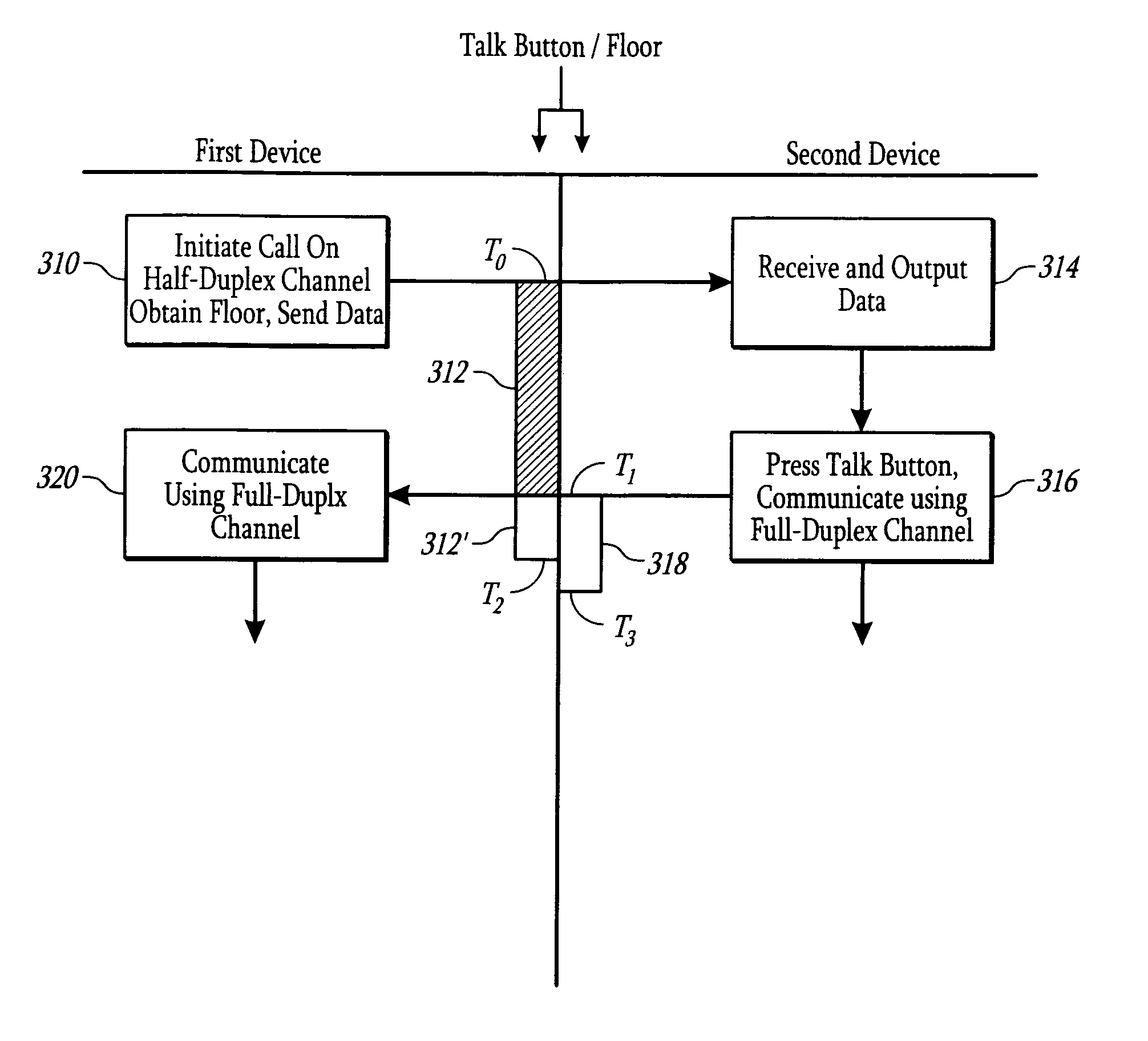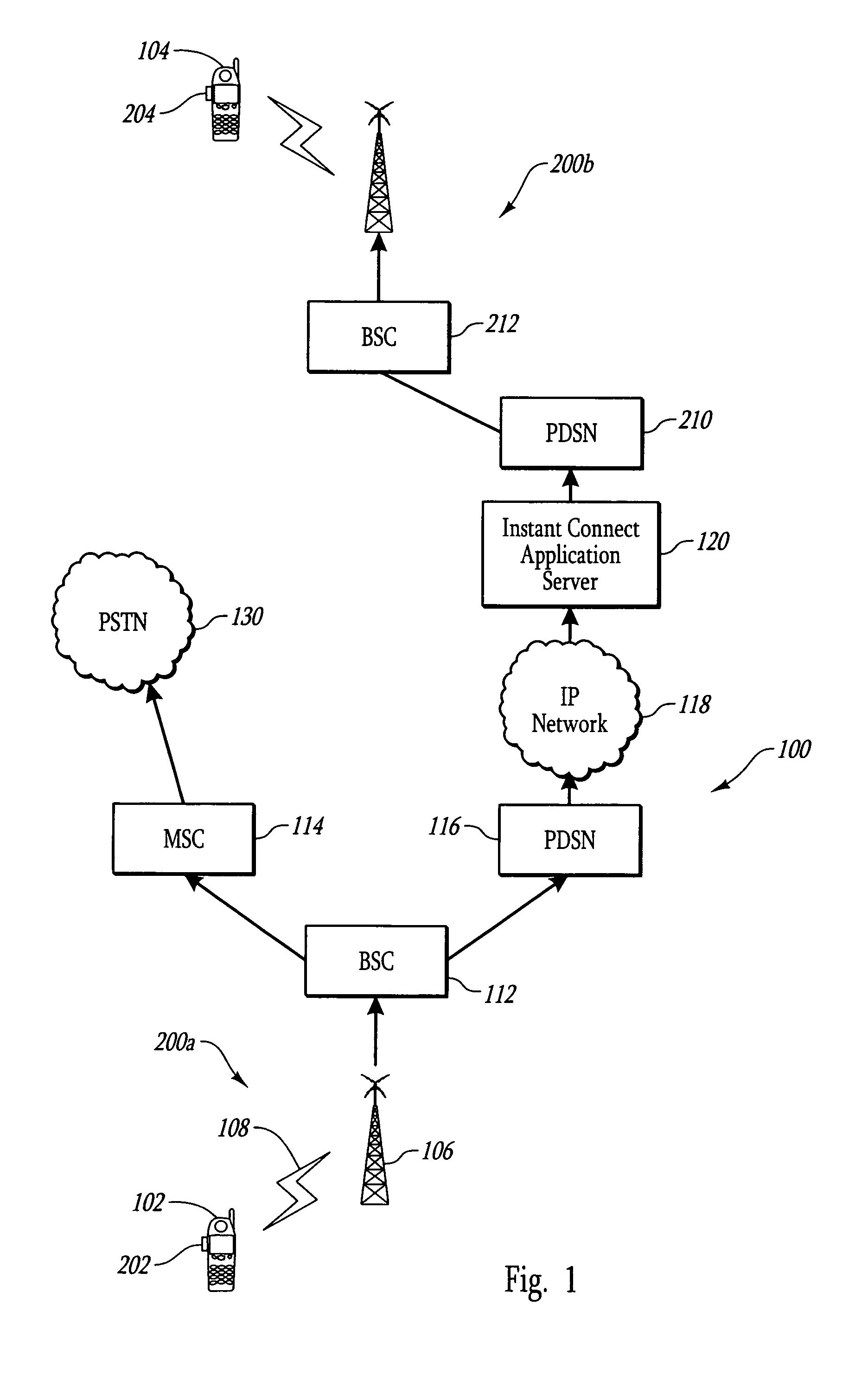Half-duplex to full-duplex transitioning in network based instant connect communication
a technology of instant connect communication and half-duplex, which is applied in the direction of network topologies, connection management, broadcast service distribution, etc., can solve the problems of unfavorable communication between the calling parties, unfavorable communication between the conversing parties, and the inability of the conversing parties to engage, so as to facilitate the pattern of two-way conversation, eliminate unnatural speech and conversation patterns, and enhance practical usability
- Summary
- Abstract
- Description
- Claims
- Application Information
AI Technical Summary
Benefits of technology
Problems solved by technology
Method used
Image
Examples
first embodiment
[0022]The present invention is directed to systems and methods for controlling the floor that is allocated between devices engaged in network-based instant connect communication. In general, the methods of the invention permit a party to initiate the transmission of voice data in a network-based instant connect communication session without waiting for the remote party to relinquish the floor. According to the invention, the party takes the floor from the remote party by pressing a talk button on the network-based instant connect device or otherwise generating a floor request signal. The floor is taken in this manner without requiring the remote party to give up the floor or otherwise give consent to the floor being given to the other party.
second embodiment
[0023]According to the invention, the need to allocate the floor between the calling parties is eliminated by transitioning the network-based instant connect call from half-duplex communication to full-duplex communication. This transition can take place after a receiving party has provided input that indicates that the network-based instant connect call has been accepted. According to either of these techniques, the parties engaged in network-based instant connect communication can interrupt, respond to, or otherwise provide feedback to each other in ways that are similar to the conversation patterns of telephone calls as opposed to those that have been previously associated with network-based instant connect calls.
[0024]1. Network-based Instant Connect Systems
[0025]In order to describe the various methods of the invention, FIG. 1 illustrates an example of network 100 in which the invention can be practiced. It is to be understood that the network of FIG. 1 represents only an examp...
PUM
 Login to View More
Login to View More Abstract
Description
Claims
Application Information
 Login to View More
Login to View More - R&D
- Intellectual Property
- Life Sciences
- Materials
- Tech Scout
- Unparalleled Data Quality
- Higher Quality Content
- 60% Fewer Hallucinations
Browse by: Latest US Patents, China's latest patents, Technical Efficacy Thesaurus, Application Domain, Technology Topic, Popular Technical Reports.
© 2025 PatSnap. All rights reserved.Legal|Privacy policy|Modern Slavery Act Transparency Statement|Sitemap|About US| Contact US: help@patsnap.com



